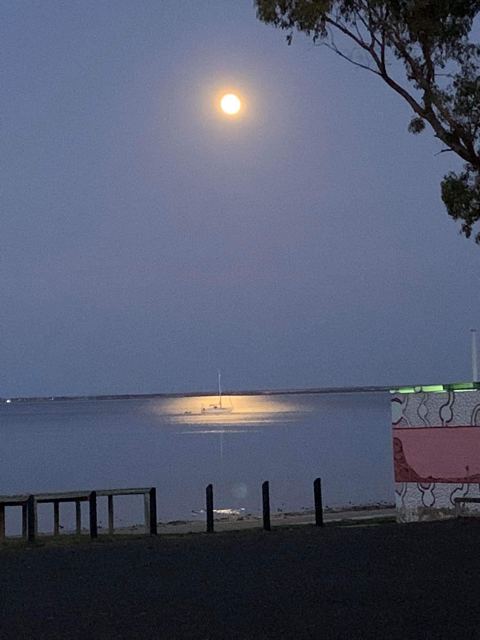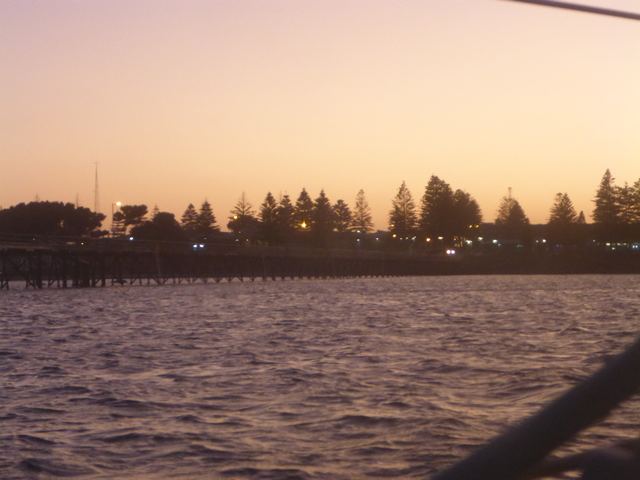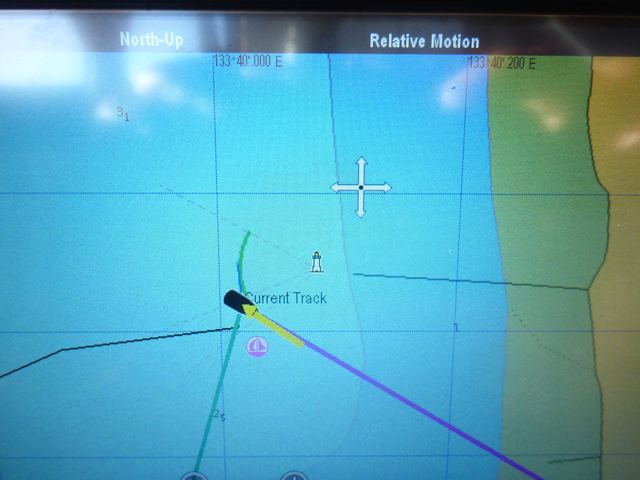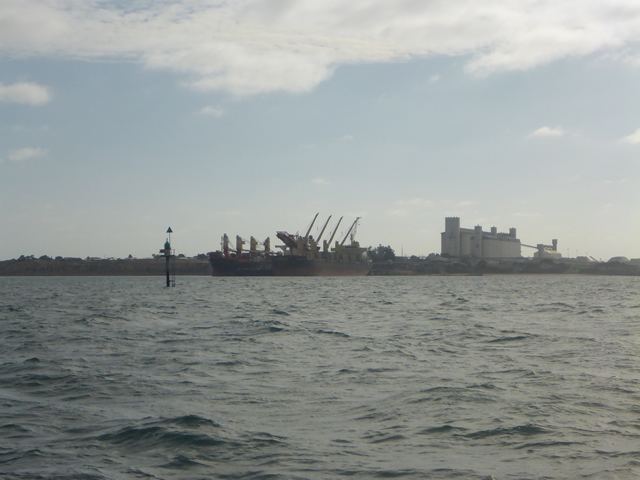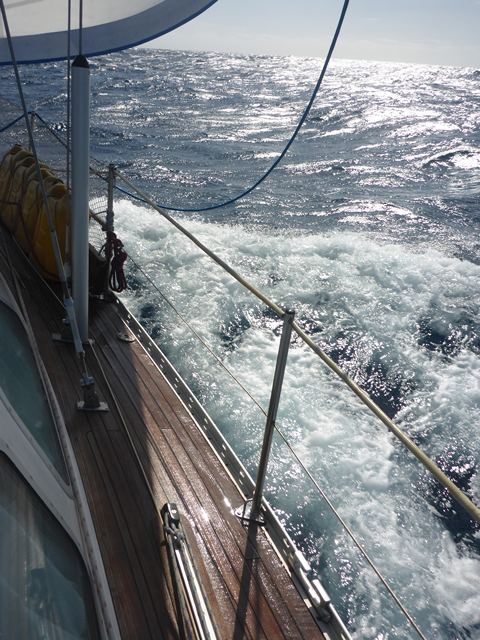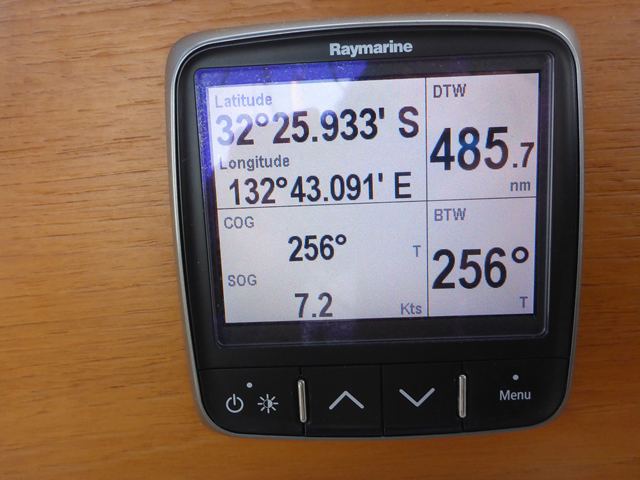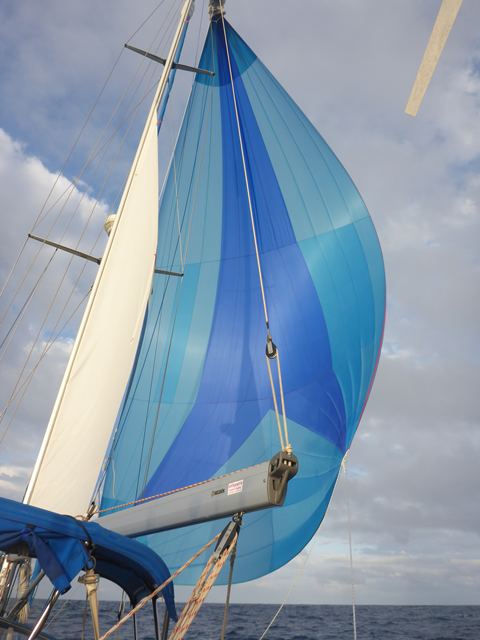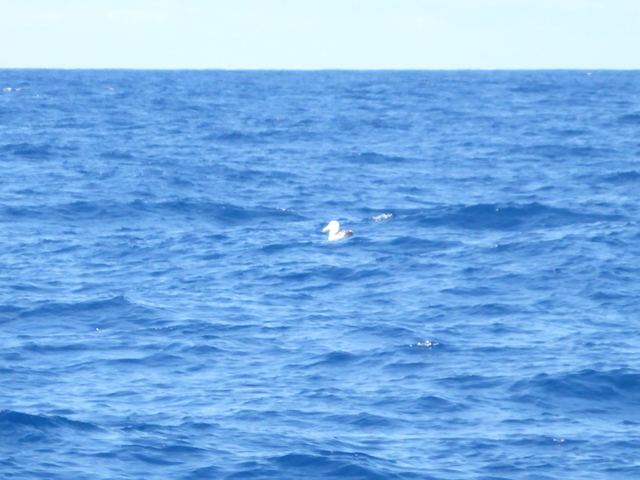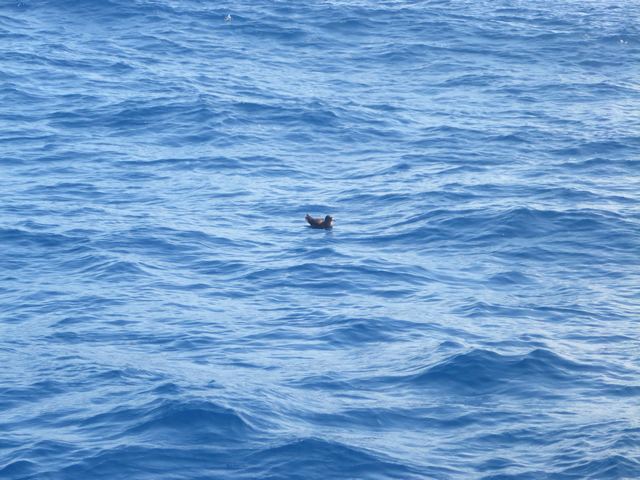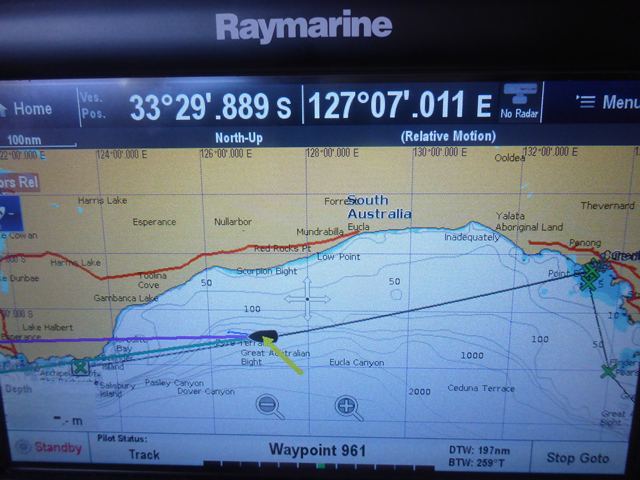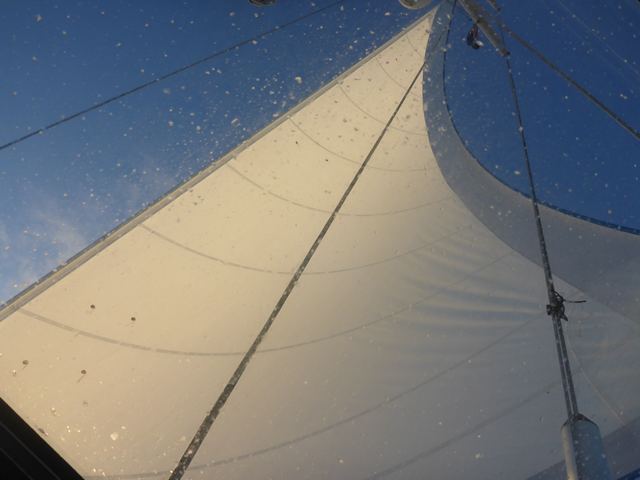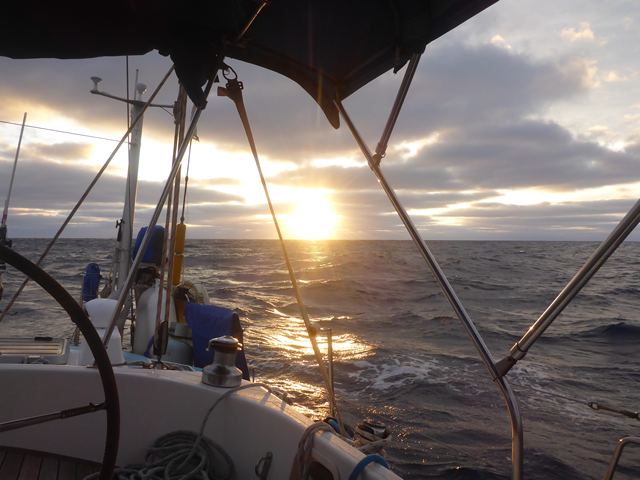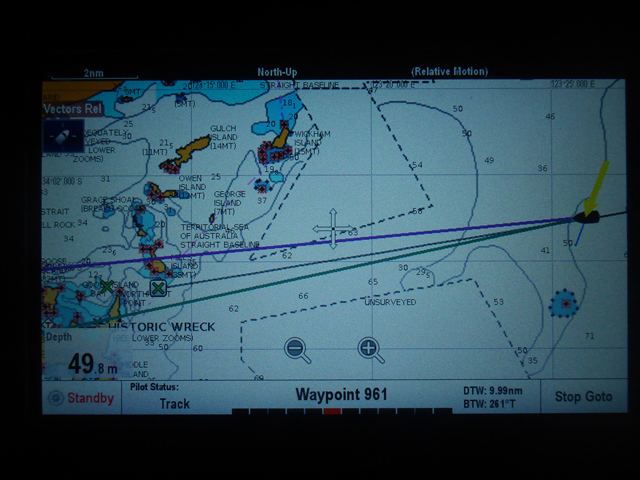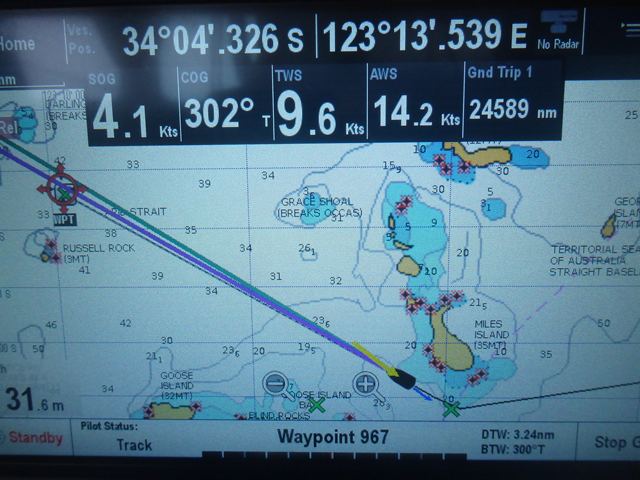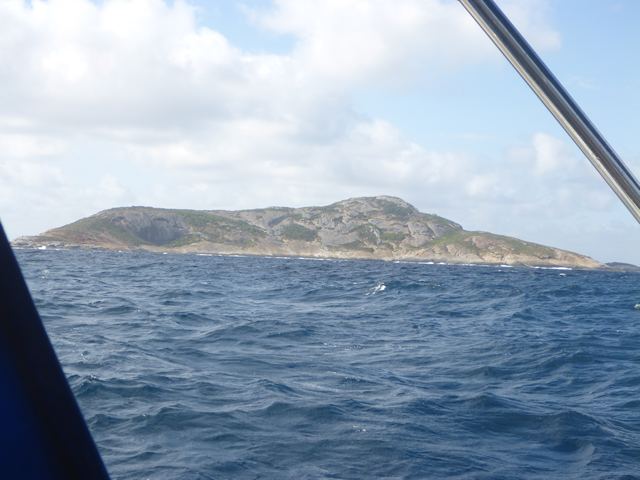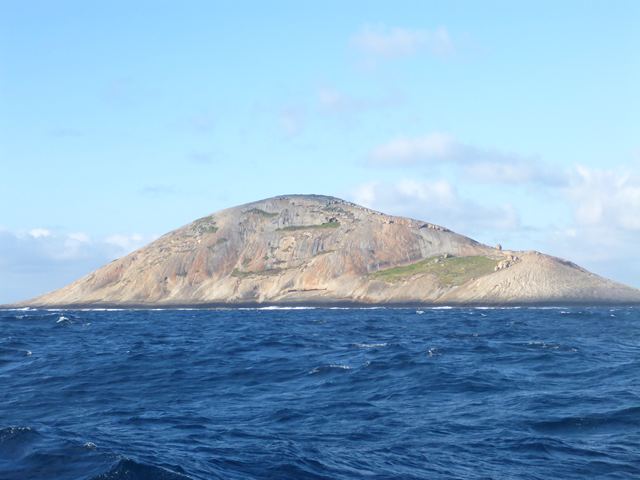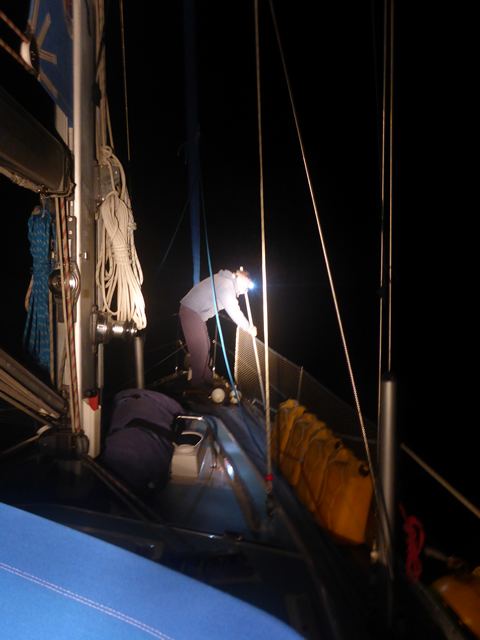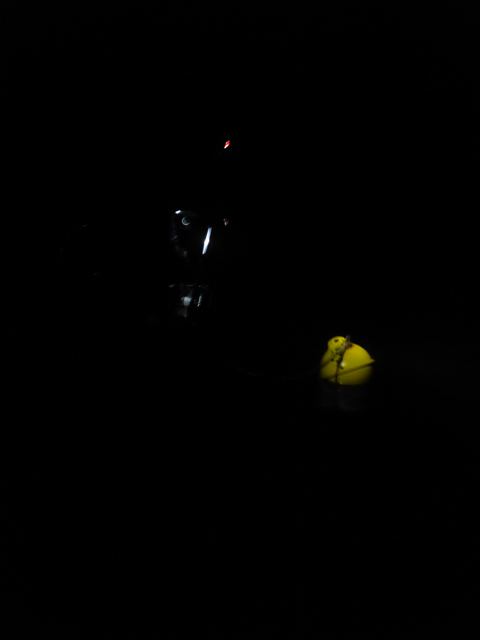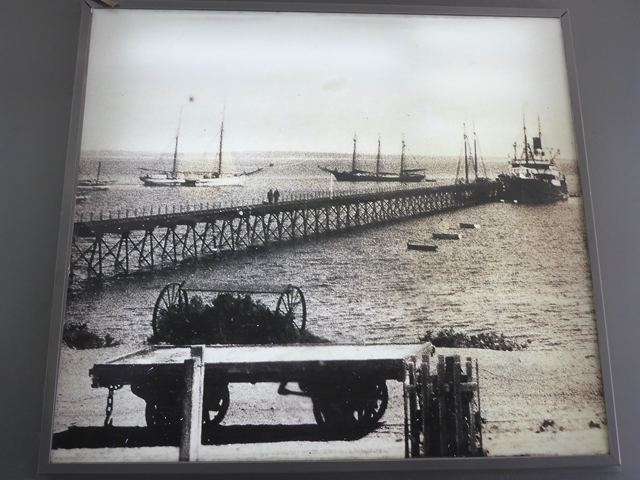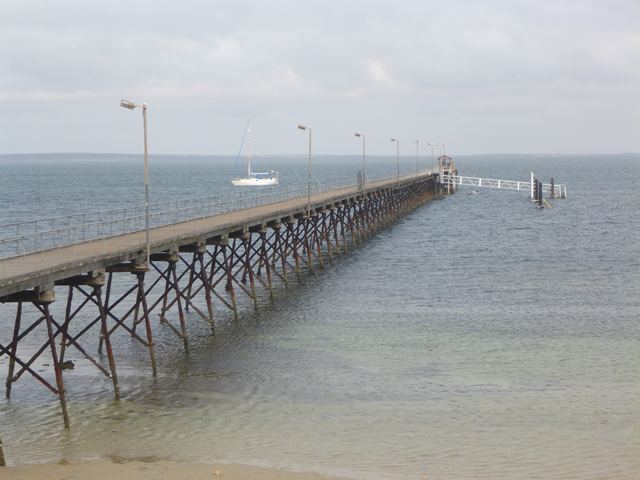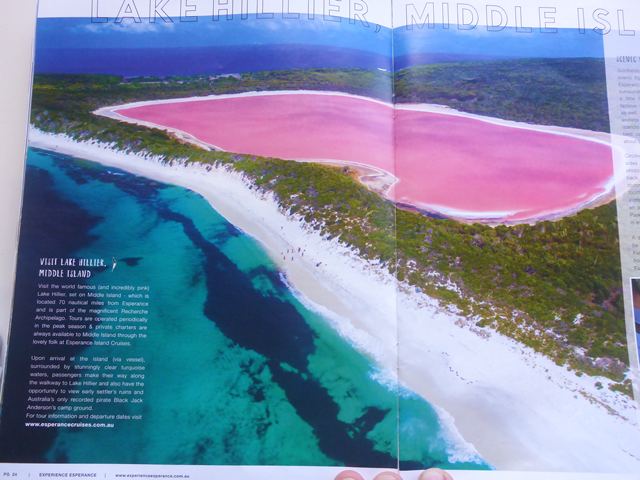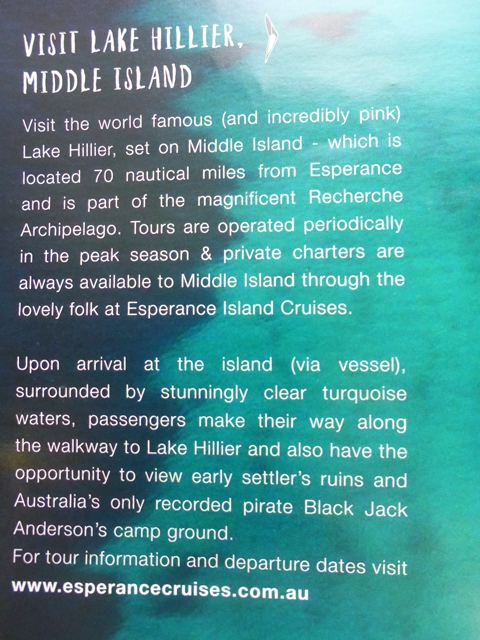2020 Aus Zoonie takes on the Bight

|
“Bight down gently please” The Roaring Forties are the motorway along which the engine of wind in the Southern Ocean powers unimpeded by any land and has its head during the Southern Hemisphere winter. So this area is best left alone for those months. During the summer months from November to May, while cyclones bare down on the northern latitudes of Australia and cause havoc from the south west Pacific Islands to the west coast of Australia, it is possible to ride the winds on top of a High Pressure System passing eastwards to the south of the Australian Bight and make that progress west in relative safety. If you spin a disc lying in the Bight on a chart anti clockwise then that’s what you have. As these winds reach the barrier of the vertical cliffs around the northern Bight of the Nullabor they strengthen, so it is a good idea to leave from somewhere up the eastern side like Streaky Bay or Ceduna and go straight across to the Recherche Archipelago, so that is what Zoonie did. Zoonie slept under the moon on her last night in Ceduna, as you can see from Kylie’s spectacular photograph for which Rob and I are very grateful. Then in the picture from the chartplotter where there are to pink lines drawn from the pier head light you can see how her anchor was secure within the area once dredged for the trading vessels when this was the only jetty. If it was good enough for the three master in the black and white photo it was good enough for Zoonie. We motored towards the winding channel we had only previously seen at night, past the two ship loading berth at 8.45 in the morning of the 12th February heading for Middle Island 530 miles away and so named because it is roughly half way along the Recherche Group. Our friends Jeannie and Merv on their 45 foot yacht Meridian Passage had started out on this passage on the 10th February 18 years previously and we had a copy of their log around to Fremantle to give us something to refer to in our decision making process. We also had their pilot book, in places marked with successful anchorages etc but now of course it was well out of date. The paper charts Carmen in the Red Cross had printed out did not cover an area for six hundred miles from a third way across the Bight so we were down to the chartplotter and eyeball navigation. Would it be enough? Soon Zoonie was rollicking along with a 17 knot wind pushing from her port stern quarter. By the next morning, as expected with the passing of the High, the wind was dropping and moving towards Zoonie’s stern, so out onto the stage of the foredeck after too long an absence strides the Diva and gives an impressive ‘come back’ performance for 47 miles while a mystery unfolded on board. I could only find one slipper, the other black with gold polka dot slipper had disappeared. We both searched and eventually Rob thought back to the possibility that he had gathered it up with the sheet while tucking in my side of the bed. There it was, flat as a pancake between the mattress and the base. I soon rectified its shape and order returned. By mid-afternoon the wind was veering forward of the Diva’s workable quadrant so while being watched by a pair of shy albatross were escorted her into the wings for her own safety and re-set the genoa. By midnight we are careering along again with the moonlight casting slithers of glass on the dark ocean and at 0500am we are HALFWAY across. Day 3, the 14th February brought a Valentine’s gift of a calm sea, virtually no swell and good progress for our ship under full main and genoa and the promise of strong winds ahead as two High pressure systems squeeze together when we near land. Shearwater birds mass together, floating on the gentle sea in good numbers. Once again we are gauging our speed so as to not arrive on this complex archipelago in the dark and cannot help but enjoy Zoonie’s unhindered progress on a flat sea, reminiscent of the South Pacific crossing as we remember it. Early morning on the 15th with 135 miles to go and the barometer is still steady, will we make it across before the strong winds arrive? On his voyage of exploration Matthew Flinders was using the same barometer as Cook had used thirty years before. He noted that the barometer rose before a change from the land breeze to a sea breeze and vice versa so he could use the barometer to warn of wind changes, this became known as The Flinders Bar. So we also use ours in this way and we know a rapid drop warns of the approach of a frontal system. The barometer arm started moving left steadily dropping millibar by millibar so we reefed Zoonie leaving out more genoa than main to help pull her along the course held by the auto helm and soon we had 27 knots of predicted wind. Suddenly there was a flash and it wasn’t the smoke alarm periodic flash either. Then, in the fading light of a threatening sky Zoonie was lit up as if in the limelight. Sheet and fork lightning was all around us so we put all our mobile devices in the oven and prayed the mast would not be struck. The wind increased to 34 knots, a full gale with rain. ‘Ah good’ I thought, that will wash some of the salt off. We had the engine running in case her batteries were hit and we wouldn’t be able to start it. While we were sailing through this maelstrom twenty four racing yachts, (I think they must have meant dinghies) were in a race off Esperance when the wind rose from 8 to 56 knots instantly and capsized twelve of the fleet, fortunately the victims were plucked safely from the water. Despite sleep being a distant prospect we did our routine watches, at least one can relax while horizontal and tucked behind the lee cloth and while Rob was resting I wondered if the welcome light of dawn would come before we reached Middle Island. The refreshing scent of pine and eucalyptus was all around and as 5.30am passed the clouds to the east grew silver linings, or more appropriately for us ‘every silver lining has a cloud’. We were entering the weather of a squash zone and fog was rolling over the vague outlines of the distant islands with the wind doing a 180 degree turn to send us 20 knots on the nose. When Meridian Passage came this way all those years ago Jeannie and Merv also experienced a frontal system of high winds (45 knots) anchoring first in Middle Bay and then moving across to Goose Island to give protection from the NW winds. Merv dived on the anchor to check it and found it was buried in sand. They may have used their 29kg fishermen’s anchor which we now have on board Zoonie, or they found a patch of sand in amongst the seagrass. Rob cannot use the anchor as it is too heavy for him to handle and risk his already weakened back and when we tried five times to anchor there using our Delta it dragged every time, combing the grass and bringing up with it a massive ball of 26 types of grass. Well out of the world’s 60 seagrass types 26 thrive here and even though there may not have been 26 types there was certainly a great diversity in the anchor ball samples. Oh for a 25kg fishermen’s. I was so sorry because Matthew Flinders had anchored here on two separate circuits of Australia in 1802 and 1803 and I would have loved to go ashore and explore the island he described. His first visit was a happy and productive one. His crew soon found the beautiful pink lake and took onboard the purest white salt from its shores that only needed to be dried before it was ready for use. His seven crew members, including John Thistle and midshipman Taylor, who weeks later would perish in the rip tide off Cape Catastrophe were still alive, chatting, laughing and making the most of their busy lives. His second visit 17 months later was part of an unfolding tragedy. Lack of fresh water sources along the north coast of Australia drove Matthew to sail to Coepang in Dutch held Timor to fill up with water there. As the Investigator moved south down the west coast one by one his men fell sick and died from dysentery and Matthew himself commented that it must be the water. As his ship rounded Goose Island his boatswain, Charles Douglas breathed his last and was buried on Middle Island. His name and the ship name were carved on a sheet of copper that was only found in 1999 and it is thought to be the oldest marked grave in Australia. He must have requested a land burial instead of a watery grave poor man. I can imagine her anchors would have been so heavy and big they would be more likely to sink through the grass into the sand than our plough shaped hook even though it has a long ‘nose’. So, despite my comment “I’m not going back out there” into the strong head wind and fog, unlike Investigator and Meridian Passage (MP) we have our chartplotter and Zoonie has an engine powerful enough to make slow progress, so we turned out towards the passage we had chosen through the archipelago. MP had an enjoyable island hopping trip using the fisherman’s where there was thick weed ‘Stopped for lunch in N.E. Bay Twin Peaks Island’ but for us it was a case of staying underway and heading for the northern bay at Hammer Head. By this time the day was wearing on and Rob was getting fed up with what he termed “all the disappointments”. On the way in we noticed fishing pots marked by white buoys and we had to take action to avoid one of them. I said nothing but I was not holding out much hope for this place either and indeed, as the sun set, Zoonie’s anchor dragged once more. Frustrating to have the solution on board but knowing it was not worth the risk using it unless we were facing an emergency. Also I felt quietly pleased that in this part of the world the diversity of seagrass is thriving along with all the diversity of plant and animal life it supports. “As a last attempt let’s try Duke of Orleans Bay,” I suggested and we motored around there just making out a small offshore island we needed to hug to avoid two small rocks in the bay itself. MP reported no sand patches there, so they changed to the fishermen’s and stayed there overnight, but it was back into the black night for us. Looking down at the chartplotter to our black route line on the way into the bay I was concerned about those pots with their long rope lines to the seabed that could so easily wrap around Zoonie’s prop, “Rob would you mind going to the foredeck with a torch when we approach our inward route please and look out for pots.” I just had a feeling. “Halt” he yelled and shone the light dead ahead so I could instantly put Zoonie into neutral, stopping the prop and turn the wheel so her forward momentum moved sideways and we watched silently as the potentially lethal two white buoys passed close down her port side. Phew. Rob had put Waypoints in to take us close to the mainland, past rocks, islands and reefs to Woody Island where Hannes had recommended we visit and sit on one of their six substantial mooring buoys. Hannes had let Rudi and Frauke, who manage the Eco Camp there, know we were coming and the thought of a mooring buoy was very welcoming. Infront of us lay two 10 mile stretches and then a few short doglegs through the obstructions, so we took turns in having one hour of sleep on each of those first legs. It was some of the best sleep, as our heads reached the pillow we were out like a doused candle and wide awake when awakened with a kiss. I thought that to get through there, motoring in the black without catching a pot would be a miracle, the same miracle as when we came into Studland Bay near Poole after midnight one night to anchor and next morning saw all the pots we had missed. I had to temper the euphoric feeling that we were nearly there and focus on the task in hand. Looking on Rob’s Google Earth we had decided on which of the mooring lines we would pick up, the one just past the jetty. It came up quicker than we expected so I let Zoonie slow to almost a stop just before it, shone the 12 volt light onto it and motored just above tick over to sit with her bow in the vicinity while Rob picked up the line and attached it around the starboard cleat. I then shone the light up the beautiful pink granite rock face just a few metres infront of us. At last, after 647 miles we could stop. It was 03.45am and we relaxed with a gin and tonic before hitting the sack. The Navionics charts on the plotter had been totally accurate. |
